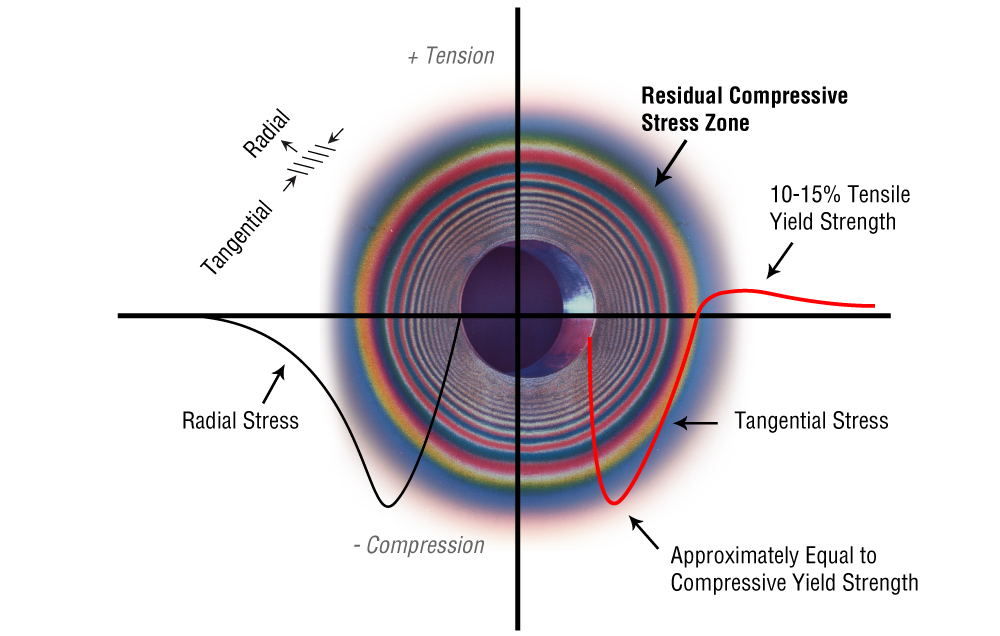First off, cold expansion has nothing to do with temperature. The process is performed at normal room temperature. It uses the word “cold” because usually when forming or deforming metals you have to use very high temperatures. For cold expansion you don’t need the application of heat or sub zero temperatures.
Cold expansion fights metal fatigue (hence the name Fatigue Technology). Think about a paper clip - what happens when you bend it back and forth over and over again? It breaks. The same thing happens to the wings of airplanes. The wings bend up and down several thousand times a year when the aircraft takes off and lands. This is called cyclic loading and can cause cracks to form in the metal. The weakest part of the metal is where the holes are drilled to hold fasteners, bushings and fittings. These holes are usually the starting point for cracks to form.
Cold expansion shields the hole from these forces by creating what is called a “zone of residual compressive stress” around it (image below). Basically what we do is take a solid mandrel that is a little larger than the hole and then pull this mandrel through the hole using a hydraulic puller. When the larger mandrel slips through the hole a process called “plastic deformation” happens and the metal around the hole is “pre-stressed” and strengthened.
The hole now has a zone of residual compressive stress around it and this prevents cracks from starting. You can think of it kind of like a rolled up newspaper. There is the hole in the middle of the roll and then there are the forces of the paper pushing against the reverse forces of the rubber band that is holding it all into place.

The residual stresses created by cold expansion significantly increase fatigue life by reducing the stress intensity factor and crack growth life by reducing the applied stress ratio at the hole. The magnitude of the peak residual compressive circumferential stress is about equal to the compressive yield stress for the material. The compressive stress zone spans one radius to one diameter from the edge of the hole, for diameters up to 1/2 inch for most materials. A balancing zone of tensile stresses lies beyond the circumferential compressive stress zone.
Cold Expansion is used on almost every commercial and military aircraft in the world due to the proven solution of crack growth and the long term benefits to both the structures fatigue life and the cost savings in installation and maintenance. The Cold Expansion method is also used to install rivetless nut plates, blind fasteners, bushings, liners, and fittings in both metal and composite applications.
Below is a three part overview presentation of Cold Expansion. You can visit our Cold Expansion installation page to see a step-by-step guide to the process.